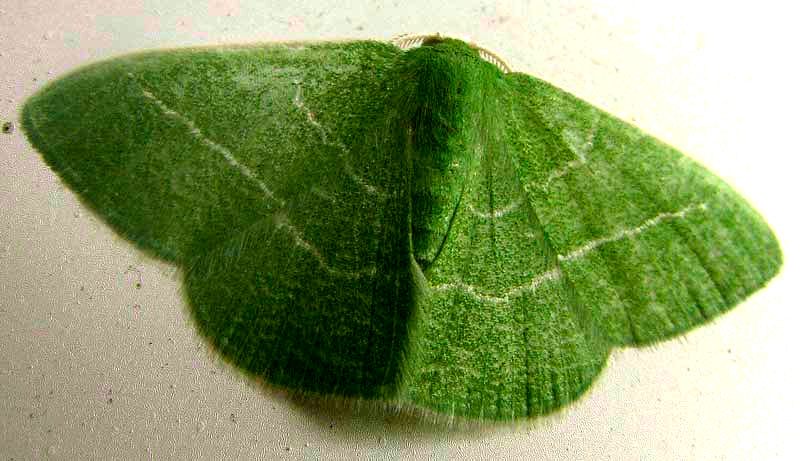Excerpts from Jim Conrad's
Naturalist Newsletter

from the July 6, 2014 Newsletter issued from the Frio Canyon Nature Education Center in the valley of the Dry Frio River in northern Uvalde County, southwestern Texas, on the southern border of the Edwards Plateau; elevation ~1750m (~5750 ft); N29.62°, W99.86°; USA
EMERALD MOTH
If you leave on an outside light at night you'll attract, confuse, exhaust and often kill an incredible number and diversity of night-navigating insects. The above antlion was surrounded by several moth species, some of which we've looked at here and some not. One moth I'd not noticed before caught my eye because it was emerald green -- not a color often turning up on moths. That's it above.
Moth's are the specialty of Bea in Ontario so of course she got to identify it. Instantly Bea recognized this as one of many species of emerald moths, meaning that they belong to the Emerald Moth subfamily the Geometrinae, of the Geometer Moth Family, the Geometridae. The "geometri" part of the names derives from the Greek meaning "Earth-measure," which refers to the caterpillars of this family, which are inchworms, and inchworms as they move along in a looping fashion appear to be measuring the Earth.
About 1,400 species of geometer moths in six subfamilies are listed just for North America, so figuring out which one we have was a challenge. Still, Bea suspects that we have NEMORIA ZYGOTARIA, and it's noted that the species has been collected and confirmed here in Uvalde County, so she's probably right.
Nemoria zygotaria appears to be a species unique to Texas in the US, though it is relatively common in south central Texas and has been collected over a wide range of counties in that region.